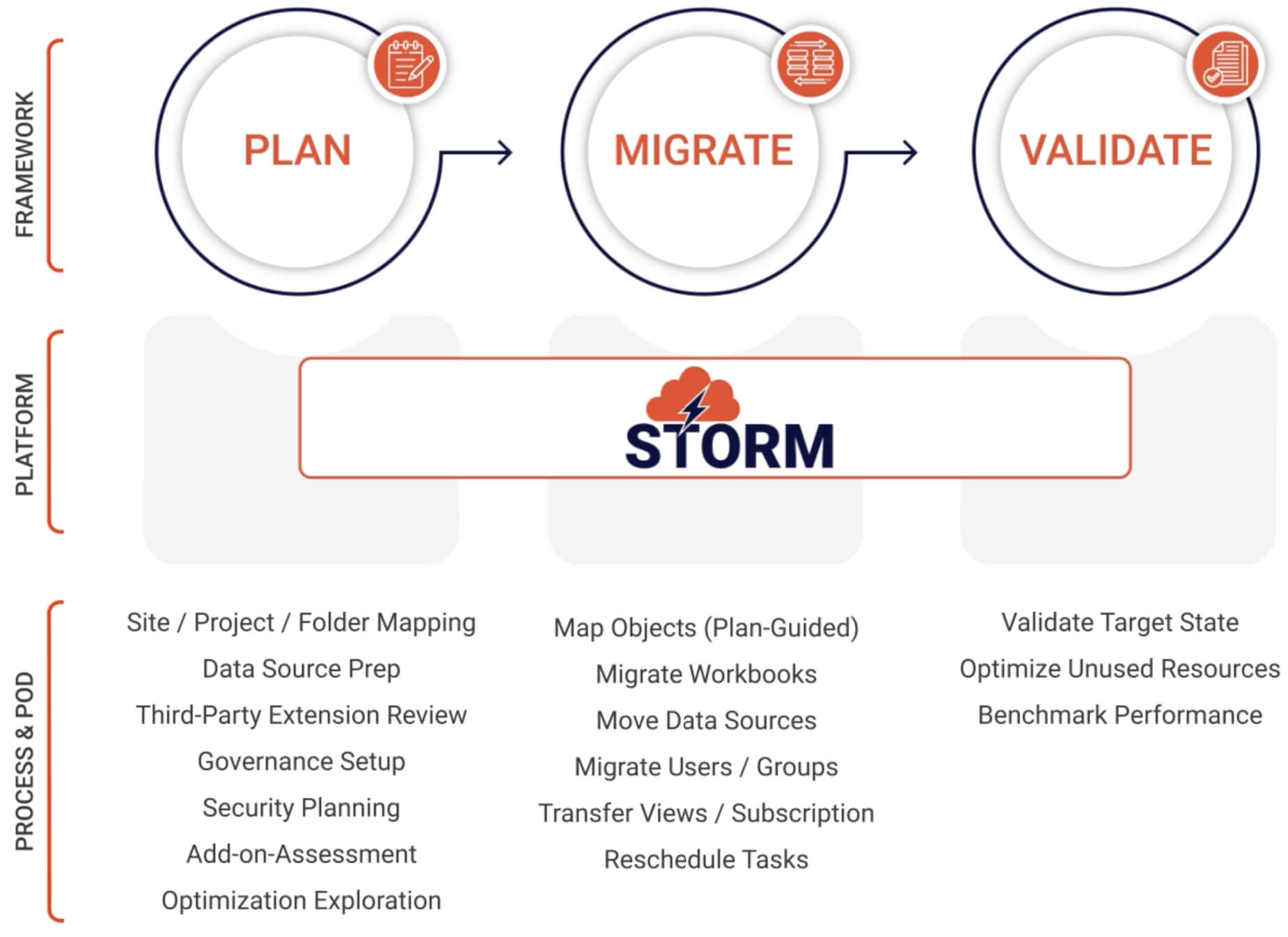
Key Insights from Migrating Tableau to the Cloud
Successful Cloud Migration Strategies for Banks
USEReady’s Guide to Tableau Cloud Migration
Imagine having to move a house from where it sits to another part of the town while remodelling it completely from the inside. You can’t break anything, and you have people staying in it all throughout. That’s what it’s like to migrate a massive on-prem Business Intelligence (BI) setup to cloud. It’s a daunting task fraught with risks and challenges – from data loss to disruptions in critical business operations.
But that’s exactly what we did for a major U.S. bank. We migrated its on-prem Tableau Server to Cloud while accelerating the entire migration process and optimizing its analytics without disrupting the on-going business operations. This blog is essentially the story of how we achieved this feat.
Introduction to Tableau Cloud Migration
Challenges Faced During Migration
Solutions and Best Practices Implemented for Migration
Outcomes and Benefits for the Bank post Migration
Overview of Migration Process
Overcoming Migration Obstacles
Tools and Techniques Used for Migration
Post-Migration Success Stories
The Challenge
The bank, a well-known US financial institution was grappling with the limitations of its on-prem Tableau Server environment. Its Tableau Server setup housed years of critical data, supported complex reporting structures and involved thousands of users and groups. With time it struggled to scale up its performance. It missed cutting-edge features offered by modern, cloud-native BI offerings. The bank’s IT team was spending valuable resources on maintaining and managing the infrastructure, diverting attention from more strategic initiatives.

Moreover, the bank had a broader mandate to adopt SaaS solutions, aiming to improve IT operations, optimize costs, enhance scalability, and gain faster access to modern BI features. It was clear that a move to Tableau Cloud was the logical next step, but the migration process presented its own set of challenges.
Enter STORM
This is where STORM, our proprietary Tableau Server to Cloud migration accelerator, came into play. STORM isn’t just another migration tool; it’s a comprehensive, script-based, framework-guided solution designed to streamline and automate key migration processes.
What sets STORM apart is its ability to perform a thorough migration assessment, facilitate content clean-up, and optimize the entire process. These features were crucial in handling the scale and complexity of our client’s environment.

The Migration in Numbers
To put the scale of this migration into perspective, let me break down some key figures:
- Over 1,020 data sources migrated, including 600 embedded data sources
- 1,300 workbooks transferred
- Configurations for 2,000 users, groups, and permissions seamlessly transitioned
The data landscape was diverse, integrating sources from Tableau Server, SQL Server, Excel, Amazon Athena, Amazon Redshift, Oracle, and PostgreSQL into the new Tableau Cloud environment. For on-premises data sources that couldn’t directly connect to the cloud, we implemented Tableau Bridge, ensuring uninterrupted data flow.
The STORM Advantage
The deployment of STORM delivered tangible, measurable benefits:
Key Learnings
Every migration is a learning experience, and this project reinforced several crucial points for us:
Looking Ahead
As more organizations recognize the benefits of cloud-based BI solutions, migrations like this will become increasingly common. At USEReady, we’re continually refining STORM to meet evolving needs and challenges in the BI landscape.
The successful migration for this major U.S. bank serves as a blueprint for other financial institutions and large enterprises looking to make the leap to Tableau Cloud. With the right tools and expertise, what seems like a daunting transition can become a streamlined, efficient process that opens up new possibilities for data-driven decision-making.











 Media Coverage
Media Coverage Press Release
Press Release
